In this chapter Places of Indian Cultural Heritage Notes, we delve into the rich cultural heritage of India, a subject that captivates both Indian and foreign visitors.
The focus is on exploring the various places that stand as testaments to India’s diverse traditions and historical legacy.
Through concise and student-friendly notes, we aim to unravel the significance of these cultural and natural heritage sites, providing a comprehensive understanding of India’s vibrant past and present.
India’s Heritage of Science and Technology Notes
Caves of Ajanta Notes
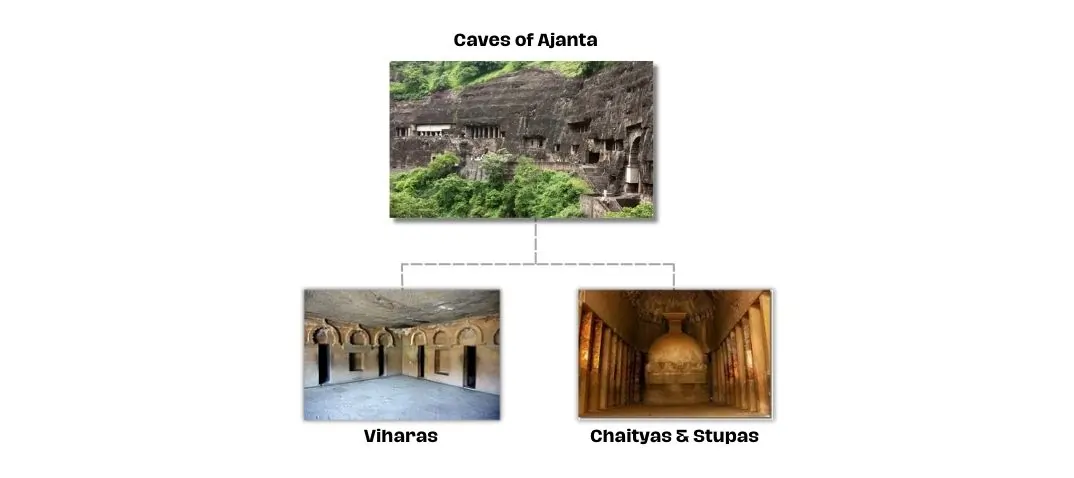
- Location: Ajanta Caves are in Aurangabad near Ajanta village.
- Importance: Known for Vastu art blending paintings and sculptures.
- Divisions:
- Wall Paintings
- Sculptures
- Best Paintings: Caves 1, 2, 10, 16, 17 have excellent Buddhist wall paintings.
- Types of Caves:
- Chaityas: 9, 10, 19, 26, 29 (Buddhist temple-halls)
- Viharas: Others (Monasteries for monks)
- Rediscovered: Found again in 1819 by Captain John Smith.
- Buddhist Vastu Art: Shows early Buddhist art brilliance.
- Damage: Time and human impact caused significant harm.
- Global Fame: Known worldwide for rich artistic heritage.
- Indian Pride: Proudly showcases Indian art’s blend of painting, sculpture, and architecture.
More Info:
- Chaityas & Stupas: Temple-halls for monks with stupas inside.
- Viharas: Monasteries where monks live and study.
Ellora Caves Notes

- Location: Ellora Caves are in Maharashtra, with 34 caves in Aurangabad district.
- Dedicated Caves Categories:
- Buddhist (1-12)
- Hindu (13-29)
- Jain (30-34)
- Dynasty: Hindu caves built by Rashtrakutas.
- Kailas Temple (Cave 16):
- Carved from one rock.
- Dimensions: 50m x 33m x 30m.
- Beautiful doors, balconies, pillars.
- Period: Built between 600 AD and 1000 AD.
- Religions: Hindu, Jain, Buddhist caves.
- Artistry: Shows Indian artists’ skills.
- Technology: Demonstrates ancient technological excellence.
- Cultural Patience: Required careful planning and execution.
- Living History: Reflects rich history and culture of ancient India.
Elephanta Caves Notes
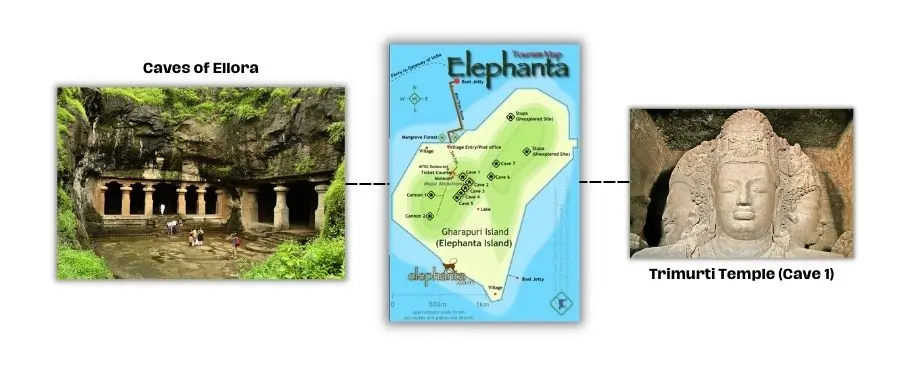
- Location: Elephanta Caves are 12 km from Mumbai, in Maharashtra, situated in the Arabian Sea.
- Number of Caves: There are 7 caves at Elephanta, each with its unique features.
- Elephant Monument: The caves got their name from a notable stone elephant monument, catching the attention of the Portuguese.
- Sculptures: Numerous beautiful carvings adorn the caves, with cave no.1 housing the remarkable “Trimurti Temple.”
- Trimurti Temple: Cave no.1’s Trimurti Temple showcases sculptures of Brahma, Vishnu, and Mahesh (Shiva), representing the Hindu trinity.
- UNESCO World Heritage: In 1987 A.D., Elephanta Cave was recognized as a UNESCO World Heritage Site for its cultural significance.
- Local Name: Among local fishermen, the caves are known as ‘Dhara puri,’ reflecting their connection to the community.
- Cultural Significance: The site holds historical and religious importance, drawing visitors and scholars alike.
- Architectural Marvel: The caves stand as a testament to ancient Indian art and architecture, reflecting a rich cultural heritage.
Mahabalipuram Notes
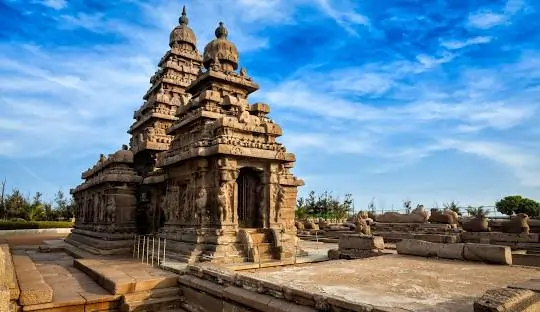
- Location: Mahabalipuram is in Tamil Nadu, India, 60 kms from Chennai.
- History: Built by Narsinh Varman-I during the Pallava dynasty.
- Architecture: Famous for splendid temples and a beautiful seashore.
- Chariot Temples: Originally seven, now five remain; two are underwater.
- Lord Vishnu: A smiling pose of Lord Vishnu is a big attraction.
- Goddess Durga: Idol of Goddess Durga defeating Mahisasura is captivating.
- Rock Sculptures: Ancient craftsmen’s brilliant rock sculptures are a highlight.
- Maritime Importance: Besides temples, Mahabalipuram was a significant ancient harbor.
Pattadakal Memorial Notes
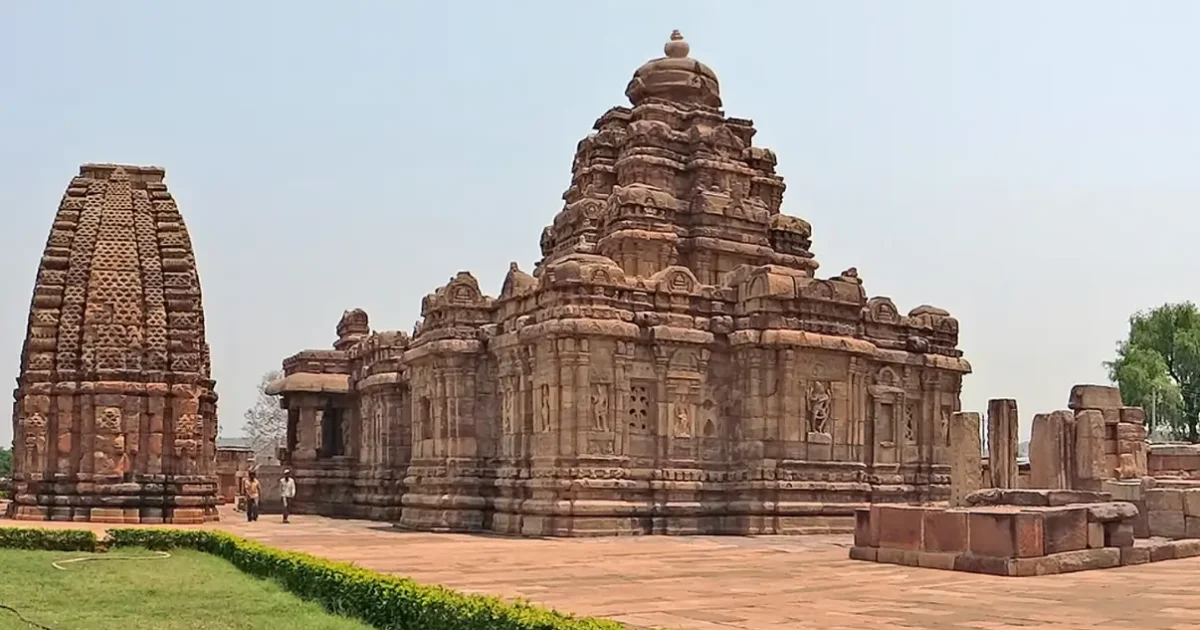
- Location: Pattadakal is the capital of the Chalukya dynasty, 16 km from Badami Nagar.
- Architectural Style: Temples in Pattadakal show Dravidian architecture.
- Construction Period: Temples built in the 7th and 8th centuries.
- Significant Temple: Virupaksha temple is the largest.
- Dynasty Connection: Important during Chalukya dynasty.
- Cultural Heritage: Temples are part of India’s rich heritage.
- Proximity to Badami Nagar: Just 16 km from Badami Nagar.
- Historical Importance: Holds ancient architectural treasures.
- Period of Construction: Provides insight into ancient practices.
- Tourist Attraction: Draws tourists with ancient temples and history.
Khajuraho Temples Notes
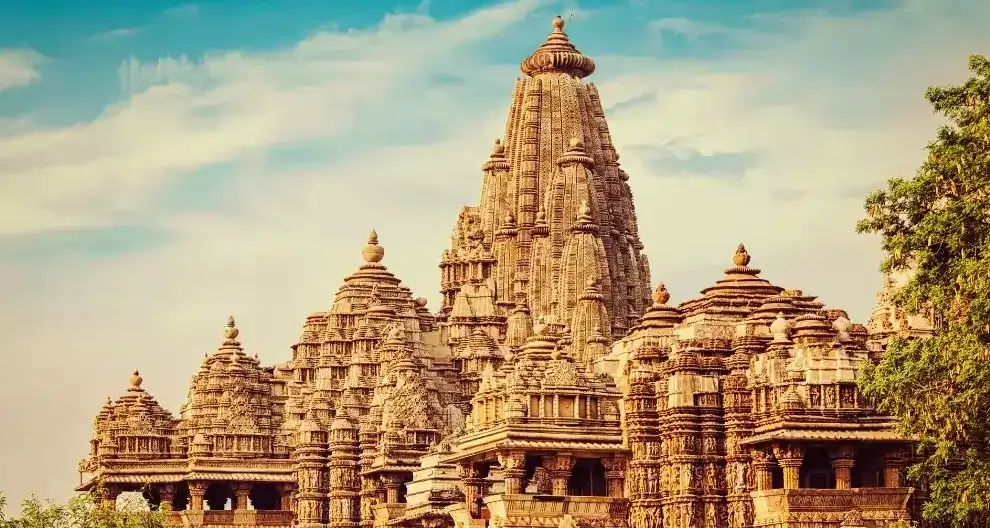
Location:
- In Khajuraho, Madhya Pradesh.
- Ancient capital of Chandela Rajputs.
Builders and Period:
- Built by Chandela Rajputs (905-1050 AD).
- 25 temples exist.
Diversity in Deities:
- Mostly Shaiva (Shiva) temples.
- Some for Vaishnav and Jain deities.
Architecture and Sculpture:
- Uniform style across temples.
- Main temple: 64 Yoginis temple.
- Ornamental toran in main temple.
Construction Material:
- All granite stone.
Architectural Style:
- Naagar style.
- Ornamental toran in main temple.
Significance of 64 Yoginis Temple:
- Main among 25 temples.
- Reflects Shaiva tradition.
Artistic Appeal:
- Captivating sculpture and vastu.
- Intricate and mesmerizing artwork.
Cultural Heritage:
- Represents Chandela Rajputs’ rich heritage.
- Shows ancient India’s religious diversity.
Sun Temple Of Konark
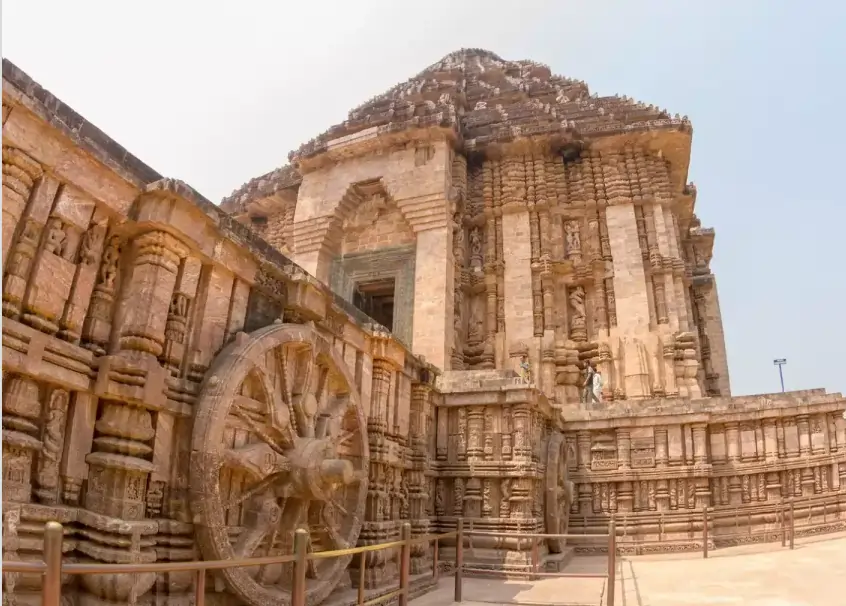
- Location: Sun Temple of Konark is situated near the Bay of Bengal in Puri district, Odisha.
- Construction Period: Built in the 13th century during the reign of King Narsinh Varman-I of the Garg Dynasty.
- Architectural Style: The temple is designed in the form of a chariot drawn by seven horses, symbolizing the chariot of the Sun God.
- Distinctive Features: The temple has 12 massive wheels, representing the twelve months. Each wheel has eight spokes, adding to the unique beauty of the temple.
- Material Used: Constructed using black stones, earning it the nickname “black pagoda” of Odisha.
- Symbolism: The twelve wheels reflect the months, and the eight spokes represent the eight prahars (time divisions) of the day.
- Artistic Details: The temple’s architecture and sculptures showcase the artistic and cultural richness of 13th-century Odisha.
- Cultural Significance: The Sun Temple of Konark is a testament to the advanced civilization and intricate craftsmanship of the region during that period.
Brihadeshwara Temple Notes
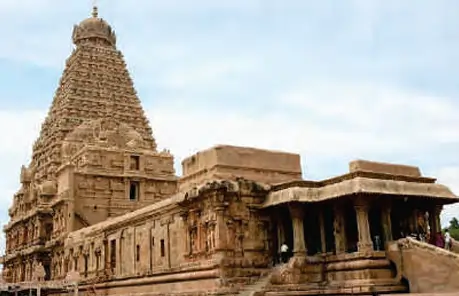
- Location: Brihadeshwara Temple is in Tanjur, Tamil Nadu.
- Construction Period: Between 1003 AD and 1010 AD.
- For whom: Dedicated to Lord Shiva, it’s also called Rajrajeshwar temple.
- Built by: King Rajraja-I of the Chola dynasty.
- Size:
- Height: 500 feet
- Width: 250 feet
- Summit: 200 feet above the ground.
- Style: Dravidian style of art.
- Environment: Surrounded by protective walls.
- Special Feature: Impressive height and width, making it stand out.
- Decorations: Beautiful and intricate artistic designs.
- Importance: Among the best temples in South India, reflecting cultural and historical significance.
- Legacy: Also known as Rajrajeshwar Temple, showcasing Chola dynasty’s support for art and architecture.
Cultural and National Heritages Of India
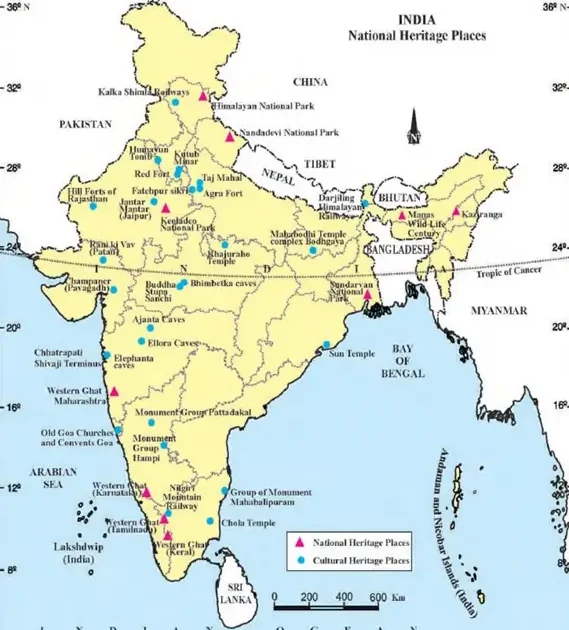
| Cultural Heritage | State |
|---|---|
| Taj Mahal | Uttar Pradesh |
| Ajanta and Ellora Caves | Maharashtra |
| Hampi | Karnataka |
| Khajuraho Monuments | Madhya Pradesh |
| Red Fort | Delhi |
| Chola Temples | Tamil Nadu |
| Elephanta Caves | Maharashtra |
| Sun Temple, Konark | Odisha |
| National Heritage | State |
|---|---|
| Nalanda Mahavihara | Bihar |
| Mahabodhi Temple | Bihar |
| Qutb Minar | Delhi |
| Jantar Mantar | Rajasthan |
| Victoria Terminus (Chhatrapati Shivaji Terminus) | Maharashtra |
| Khajuraho Group of Monuments | Madhya Pradesh |
| Group of Monuments at Mahabalipuram | Tamil Nadu |

